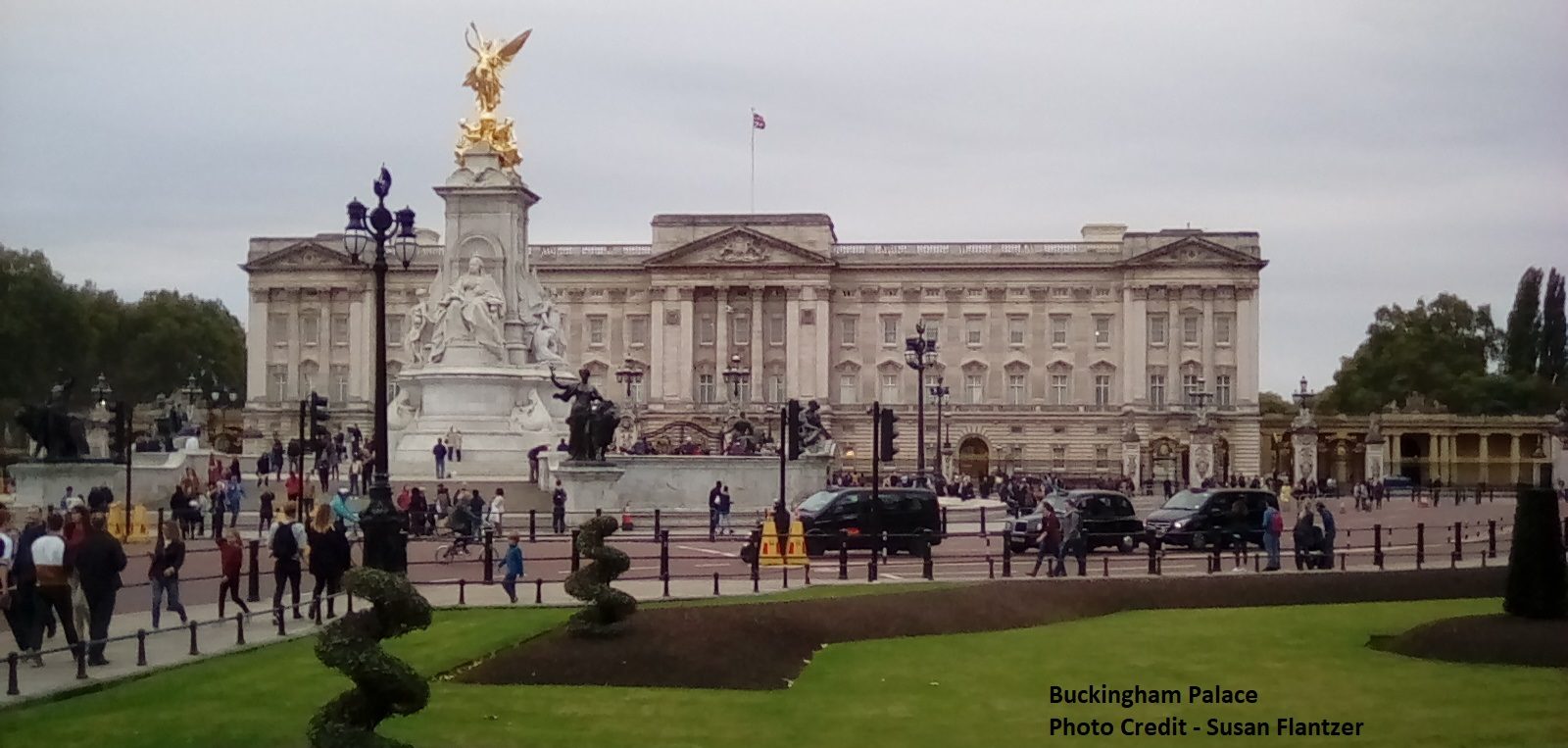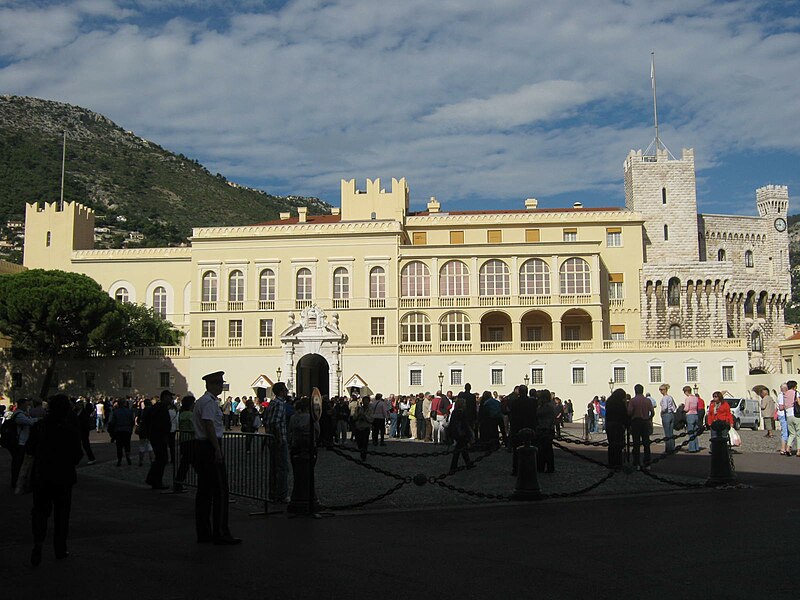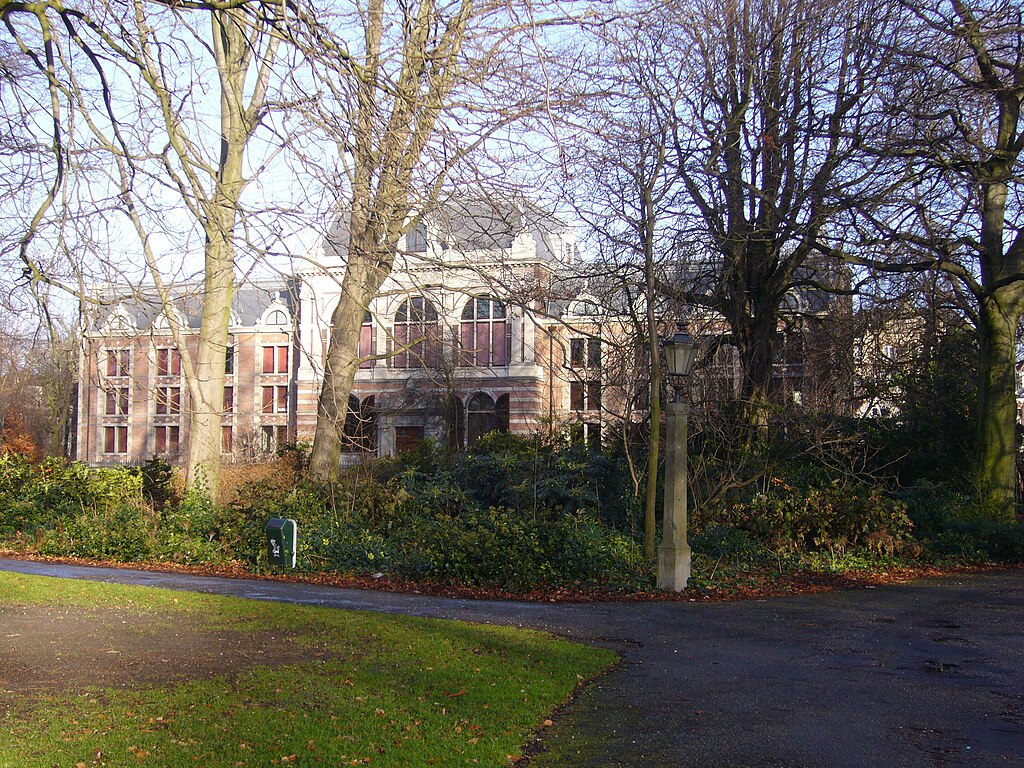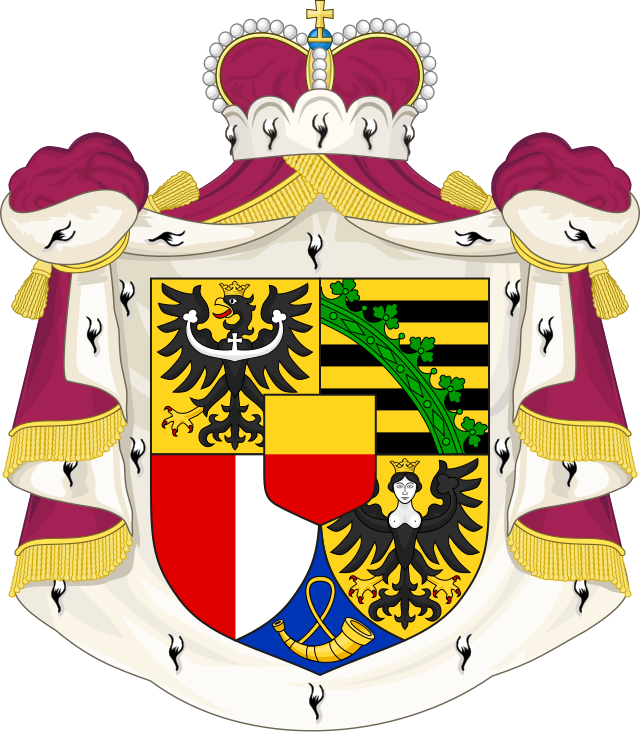by Scott Mehl © Unofficial Royalty 2015

source: Wikipedia, Photo by Jean-Pierre Dalbéra
The Royal Palace of Madrid
The Royal Palace of Madrid is the official home of the Spanish Monarchy. It is used for State and ceremonial functions but has not been used as a royal residence since the reign of King Alfonso XIII and Queen Victoria Eugenie. With nearly 1.5 million square feet and over 3,400 rooms, The Royal Palace of Madrid is the largest palace in Europe.
When the Spanish monarchy was restored in 1975, the new King Juan Carlos and Queen Sofia chose to remain at Zarzuela Palace, where they had lived since marrying in 1962. And upon Juan Carlos’ abdication in 2014, King Felipe VI and Queen Letizia also chose to remain at their home, which is located just next to Zarzuela Palace. The Royal Palace of Madrid continues to be used for formal events such as State Dinners and was the site of the wedding banquet for the current King Felipe and Queen Letizia in 2004. It is open to the public for the majority of the year.

The Alcazar of Madrid, from a 17th-century painting. source: Wikipedia
The palace was built on the site of the former Alcazar of Madrid – a medieval fortress which had been transformed into a lavish palace by Kings Juan I, Carlos V and Felipe II who made it the official residence of the sovereign in 1561. The Alcazar was destroyed by fire on Christmas Eve 1734, and King Felipe V decided to build a new Royal Palace. Construction began in 1738 and the building was completed in 1751, but it wouldn’t be occupied until 1764 when King Carlos III installed his court there. Despite this, the early monarchs spent only a few weeks there each year. Over time, it became the primary residence of the Sovereign, until the overthrow of the Spanish monarchy.
The palace is designed as a square, built around an inner courtyard. The principal state rooms are located on the southern and western wings.
The Southern wing overlooks the Armory Square and is the main entrance to the palace. It contains the Grand Staircase, the Hall of Columns, and the Throne Room. These rooms were once part of the apartments of King Carlos III.

The Grand Staircase. source: Wikipedia

The abdication ceremony of King Juan Carlos in the Hall of Columns. source: Daily Mail/EPA
The Hall of Columns was initially part of the apartments of King Carlos III. It is one of the most used rooms in the palace, where the King often meets foreign ambassadors and the diplomatic corps as well as other official events. In 2014, it was the site of the abdication ceremony of King Juan Carlos I.

The Throne Room. source: Wikipedia
The Throne Room is today used primarily in conjunction with State Visits. It is here that the King and Queen are photographed with their guests prior to a State Dinner. They also greet members of the government and other invited guests prior to the formal dinner in the Banqueting Hall.
The Western wing, overlooking the Campo del Moro Gardens, contains the Carlos III Room, the Porcelain Room, the Yellow Room, the Gala Dining Room, and the Music Room.
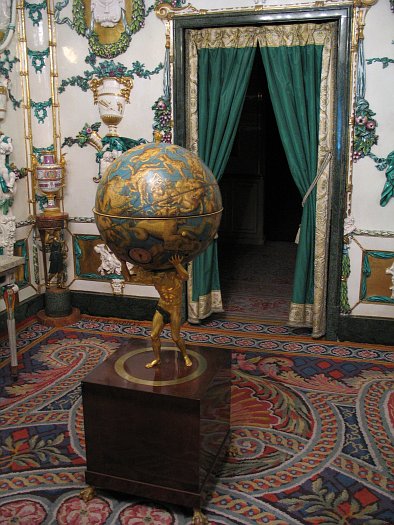
The Porcelain Room. source: Wikipedia, Photo by Osvaldo Gago
The Porcelain Room features porcelain covering the walls and ceiling, as well as numerous porcelain objects on display. It was designed and built in the 1760s.

The Gala Dining Room. source: Wikipedia, Photo by Jose Luis Filpo Cabana
The Gala Dining Room was once part of the apartments of the Queen, during the time of King Carlos III. It was King Alfonso XII who turned the room into the Gala Dining Room which is still used today for large formal events, such as State Dinners.
The Northern wing, overlooking the Sabatini Gardens, includes the Royal Chapel and several of the former royal apartments. On the ground floor of the Northwest corner of the palace is the Royal Library.

The Royal Chapel. source: Wikipedia, Photo by Eric Chan
Once the main Chapel of the royal family, the Royal Chapel is today only used occasionally, most notably for funerals. The funerals of both the Count and Countess of Barcelona (parents of King Juan Carlos) were held here in 1993 and 2000 respectively.

The Royal Library. source: Wikipedia, Photo by Fabio Alessandro Locati
The Royal Library, which spans two floors, was begun during the reign of King Felipe V, who joined his personal collection with that of the former Alcazar. Subsequent sovereigns added to the collection, and it was King Alfonso XII who began the task of counting and cataloging everything in the collection. Today, the library contains over 300,000 books, 4,700 manuscripts, 4,100 musical works, 7,000 maps, 200 engravings and drawings, and 2,000 coins and medals.
The Eastern Wing overlooks the Plaza de Oriente and housed the private apartments of the sovereigns from the time of King Carlos IV. These rooms include the small Dining Room, the Billiards Room, the Room of Mirrors, and the Tapestry Room. Many of these rooms are used regularly for royal audiences.

The Billiards Room. source: Wikipedia, Photo by Jose Luis Filpo Cabana
To the south are two wings which extend out, forming another courtyard known as Armory Square. The eastern wing contains the Royal Pharmacy and the apartments of Queen Maria Christina. Among these rooms is the Crown Room which was created in 2014.

The Royal Pharmacy. photo by Duimdog at nl.wikipedia
Since the reign of King Felipe II, the Spanish royal family has maintained a Royal Pharmacy, to provide them with any necessary medications. The Royal Pharmacy in the Royal Palace of Madrid – set up as a museum since 1964 – displays many of the old bottles and containers used to house various drugs and treatments, as well as the adjoining distillation rooms.

The Crown Room. source: Patrimonio Nacional
Formerly one of the rooms in the apartments of Queen Maria Christina, the Crown Room was established following the accession of King Felipe VI in 2014 to display the symbols of the constitutional monarchy – the original throne of King Carlos III as well as his crown and scepter; the collar of the Order of the Golden Fleece belonging to Queen Isabella II, and the Table of Sphinxes – the majestic Empire style desk acquired by King Carlos IV in 1803. It was on this desk that King Juan Carlos signed the Organic Act, confirming his abdication from the throne. Also on display are King Juan Carlos’ abdication speech and a copy of the proclamation speech of King Felipe VI.

The Royal Armory. source: Wikipedia, Photo by Jose Luis Filpo Cabana
The western wing houses the Royal Armory, which houses what is considered to be one of the best collections of armor in the world. Read more about the Royal Armory here.
Just to the south of the palace, across Armory Square, is the Cathedral of Saint Mary the Royal of La Almudena, which was the site of the 2004 wedding of King Felipe VI and Queen Letizia.
Learn more about the other Spanish Royal Residences here!
This article is the intellectual property of Unofficial Royalty and is NOT TO BE COPIED, EDITED, OR POSTED IN ANY FORM ON ANOTHER WEBSITE under any circumstances. It is permissible to use a link that directs to Unofficial Royalty.
